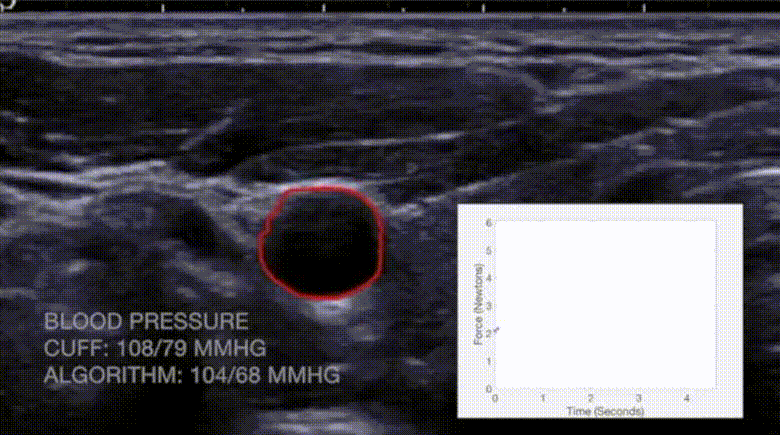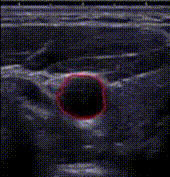
Common techniques to measure blood pressure include an arterial catheter, an oscillometric pressure cuff, or an auscultatory pressure cuff. Oscillometric and auscultatory cuffs have an associated error, cannot be used continuously, and fully collapse the brachial artery. An auscultatory cuff also requires auditory analysis of the artery as the artery is collapsed as well. An arterial catheter is the gold standard of blood pressure measurement, but is extremely invasive and can only be performed in a hospital setting. Our approach of monitoring blood pressure has the potential to be continuous and can be estimated in real-time with a novel non-invasive ultrasound system. The system involves pairing traditional ultrasound data of an artery with force sensor data. The blood pressure estimation algorithm then uses both streams of data to perform finite element analysis. The output of the optimization consists of an estimate of systolic and diastolic blood pressure, arterial stiffness, and surrounding tissue stiffness. The algorithm estimates systolic pressure and diastolic pressure with a systolic accuracy/precision of -5.2 mmHg/10.7 mmHg and a diastolic accuracy/precision of -3.9/8.0 mmHg when compared to an oscillometric blood pressure cuff. Both of these metrics are approximately within the average error of the cuff. The real-time monitoring of blood pressure shows promise in the millions of people afflicted by high blood pressure. Further advancements in the technology will allow continuous, calibration-free monitoring for those patients. Furthermore, arterial stiffness or elasticity also has implications in monitoring and diagnosing atherosclerosis, a highly prevalent diseases affecting millions in the United States alone.

